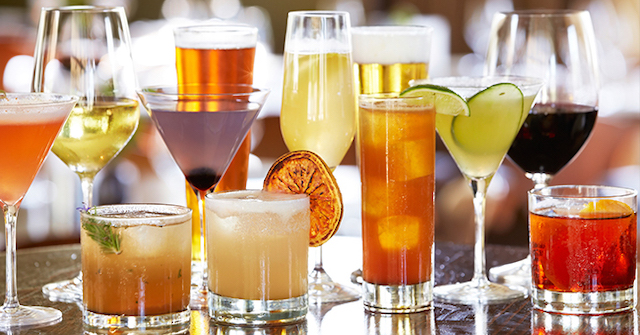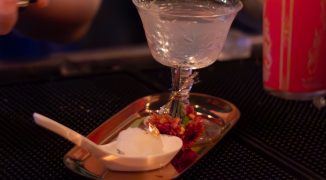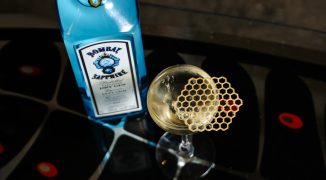With the often prohibitive cost of a full liquor license and the challenge of navigating convoluted regulations that vary from one jurisdiction to the next, some bars opt to serve beer and wine rather than amass a top spirit collection and serve craft cocktails. If your bar is limited to a beer and wine license, there’s more to offer than mimosas, saketinis and sangria.
Nick Capriccio’s father was running a wholesale liquor business in California when, around 12 years ago, he developed an agave wine. In 2011 Capriccio took the reins of the new brand, San Gabriel Beverage Group, which has expanded to include wine-based substitutes for vodka, tequila, rum, whiskey and gin.
San Gabriel distributes to bars and restaurants that don’t have full liquor licenses. “Either people who can’t afford the full liquor license or just simply don’t want to get it,” Capriccio says. “It’s a great way for them to compete with those beer bars and offer their patrons a cocktail.”
The agave wine remains the company’s flagship product, which Capriccio recommends using in a margarita (recipes are posted at San Gabriel’s website). “We have seen people really taking control of the product, hire on a mixologist and do a habanero margarita, for example.” Capriccio highlights Sun Café in Studio City, Los Angeles, as an example of a bar getting creative with the product.
“We see people who have a beer and wine license, or who have applied for a full license but haven’t got it yet; they start using our products for a few months and realize that they don’t need the full license.”
Depending on the rules where you are based, low-alcohol liqueurs are a smart choice for creating low alcohol cocktails. “Every bartender should have a few go-to cocktails in their repertoire to satisfy their guest’s palate and wants in this category,” says Moses Laboy, who runs the beverage program at Bottle & Bine. “My advice is to always have fun and think outside of the box when creating cocktails but be conscience to keep flavor profiles fresh and clean when building layers of flavors, its very easy to get carried away and create murky tipples with these complex, low ABV spirits, wine and beer.”
Moses recommends three recipes to try for low alcohol liqueur, beer and cider-based cocktails:
- The Flor de Jerez invokes sherry, which is increasingly popular on American bar menus. “Summer is a wonderful time to offer refreshing wine based cocktails,” Bottle & Bine beverage director Moses Laboy says. “One of the most famous classic summer wine based cocktails being the sangria. I’m taking a drier flavor profile approach in this fortified wine based cocktail.”
- 2 oz fino sherry
- 2 oz Lillet Blanc
- 2 dash orange bitters
- 1 dash Angostura bitters
- Build in a stirring glass, strain over cracked ice in a red-wine glass or wine goblet and garnish with an orange peel/brandied cherry garnish.
- Karma Chameleon is a cocktail-driven riff on the radler, using Campari as a layer of bitter complexity alongside easy-drinking witbier and citrus.
- 1 oz Campari
- 3/4 oz fresh orange juice
- 1/2 oz fresh lemon juice
- 5-6 oz Belgian style wheat beer
- blood orange half wheel for garnish
- Build Campari and juices in pint glass. Fill with ice, top with beer, fold with a bar-spoon, garnish and enjoy!
- I Can’t Wait makes use of cassis, citrus and cider for a build that looks like a cocktail, but drinks like a low-ABV sparkling spritz.
- 3/4 oz good quality cassis
- 1/2 oz lemon juice
- 4-5 oz well made cider
- blackberries or raspberries garnish
- Build cassis and lemon juice in a Collins glass. Add ice, fill with beer, fold with a bar spoon, garnish with berries, stick a straw in it and enjoy. Layer berries on top of the glass/cocktail to make a visually appealing, photo ready cocktail.
(Note: spirits legislation varies from state to state, so you’ll want to check in on how things like aperitifs and fortified wines are categorized in your area. Happy mixing!)




